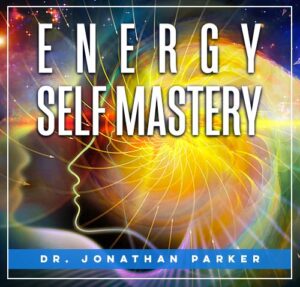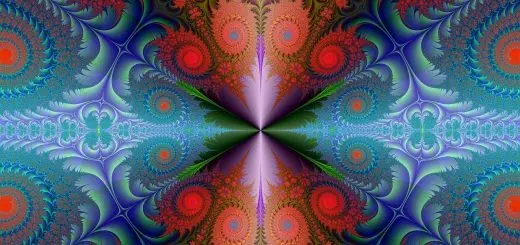What is prana energy in yoga and meditation

Looking for more amazing products? Check out our online store and explore our collection here! Happy shopping!
Before diving in, please note: This post is for informational purposes only. If you’d like to know more about how we approach topics, feel free to check out our friendly Disclaimer Page.
Hey there, amazing readers! 
We’re committed to delivering quality posts, and your support (even just sticking around despite the ads) means everything to us. So, bear with us, and thanks for helping us keep the good vibes rolling. Now, on to the fun stuff!
TRANSLATE BUTTON AT THE END OF THE ARTICLE
A Quick Overview
Prana energy—an essential concept in yoga and meditation—can be thought of as the life force that animates all living beings.
It is deeply intertwined with our well-being, influencing everything from our physical health to our emotional state.
This article dives deep into the essence of prana energy, exploring its origins, its impact on our mind and body, and practical ways to harness it for a vibrant life.
So, let’s embark on this enlightening journey together!
Understanding Prana: The Vital Life Force Explained
Prana is often described as the vital energy that flows through us, akin to the air we breathe.
It’s not just about oxygen; it’s a more profound essence that nurtures our existence at every level.
Imagine prana as the electricity that powers our bodies, enlivening our cells and ensuring proper function.
When I first learned about prana, it felt like I was introduced to a hidden layer of reality.
This life force is commonly associated with breath, but it expands beyond that.
It encompasses the energy that flows through our meridians and chakras, influencing our emotional and physical health.
In essence, when our prana flows freely, we feel energized, balanced, and alive.
Prana is categorized into five main types—prana (upward-moving), apana (downward-moving), samana (equalizing), udana (ascending), and vyana (pervasive).
Each type has distinct functions, from digestion to circulation, illustrating how prana orchestrates the symphony of our body’s processes.
Understanding prana is not merely an intellectual exercise; it’s an invitation to deepen our connection with ourselves.
When we recognize this energy within us, we can learn to nurture and manage it, paving the way to a healthier and happier existence.
The Roots of Prana in Ancient Yoga Philosophy
The concept of prana has its roots in ancient Indian texts, particularly the Vedas and Upanishads.
These sacred writings present prana as the universal life force connecting all beings.
The word "prana" itself translates to "breath" or "life," highlighting its integral role in our existence.
In the context of yoga, prana is considered essential to spiritual growth.
The ancient sages understood that by cultivating prana, one could elevate their consciousness and achieve deeper states of awareness.
Yoga practitioners today continue to draw from this ancient wisdom.
Yoga philosophy teaches that prana flows through nadis—subtle energy channels—within our bodies.
These channels are akin to rivers, transporting energy to different parts of our being.
When these nadis are blocked, it can result in physical ailments or emotional distress.
Therefore, the removal of blockages and the cultivation of prana have been central to yogic practices for centuries.
As I explored these teachings, I found that the ancient yogis had insights that resonate with modern science.
Their focus on energy as a vital component of health and wellness is becoming increasingly recognized in holistic health circles today.
It’s fascinating to think that this knowledge has stood the test of time.
How Prana Energy Influences Mind and Body Connection
Prana serves as the bridge between our mind and body.
Master your Energy and Awaken Your Spirit – start your journey here.
When I first became aware of this connection, it was eye-opening.
Emotions and physical sensations are intertwined, and how we breathe can dramatically affect our mental state.
Think about it: when we’re anxious, our breaths become shallow.
Conversely, deep, mindful breathing calms our mind.
The flow of prana influences our mental clarity, emotional resilience, and even creativity.
When prana is abundant, we feel inspired and focused.
However, when it’s stagnant or blocked, we may experience fatigue or mood swings.
This understanding has helped me adjust my yoga practice and meditation, paying closer attention to my breath and energy flow.
Yoga poses (asanas) not only stretch and strengthen our muscles but also help to release stagnant energy.
For instance, when I hold a forward bend, I feel a gentle release along my spine, as if I’m letting go of stress and inviting fresh energy in.
This is prana in action—renewing and revitalizing.
Moreover, the connection between prana and mental health is an area of growing interest.
Practices that promote the flow of prana, such as yoga and meditation, have shown promise in reducing anxiety and depression.
It’s compelling to see how ancient practices align with modern psychological principles.
The Role of Breath in Cultivating Prana Energy
Breath is the primary means of accessing and cultivating prana energy.
The simple act of breathing becomes a powerful tool in our wellness arsenal.
Think about your breath as an anchor.
When you focus on it, you ground yourself in the present moment.
Breathwork, or pranayama, is a cornerstone of yoga that emphasizes conscious breathing techniques.
I remember my first pranayama session; it felt as though I was awakening a sleeping giant within me!
By controlling our breath, we can enhance our prana flow and, consequently, our overall well-being.
Different pranayama techniques serve various purposes:
Ujjayi Breathing: This oceanic breath creates a soothing sound, helping to calm the mind.
Nadi Shodhana: The alternate nostril breathing technique balances the left and right brain hemispheres.
Kapalabhati: This energizing breath expels stale air and brings clarity.
When practicing these techniques, I often feel a surge of energy and a sense of mental clarity.
It’s incredible how something as natural as breathing can lead to such profound shifts in how we feel and think.
Breath is also a reminder of our connection to life itself.
When we consciously engage with our breath, we acknowledge the present moment and nurture our inner selves.
This simple practice can transform our day-to-day experiences, enhancing our capacity to respond to life’s challenges.
Different Types of Prana: A Closer Look at Its Forms
As previously mentioned, prana manifests in five primary forms, each with unique roles.
Understanding these forms can deepen our practice of yoga and meditation.
Prana: The upward-moving energy associated with inhalation and nourishment.
It’s vital for vitality and growth.
Apana: The downward-moving energy linked to elimination and grounding.
It helps us release what no longer serves us.
Samana: The balancing energy that facilitates digestion and assimilation, both physically and mentally.
Udana: The ascendant energy associated with speech and higher consciousness.
It’s crucial for communication and self-expression.
Vyana: The pervasive energy that circulates throughout the body, connecting all parts and ensuring harmony.
Each form of prana plays a critical role in our overall health.
When I learned about these distinctions, it was like uncovering a new layer of understanding about how my body operates.
For example, I’ve noticed that when I practice grounding exercises, I can tap into my apana energy, which helps me feel more stable and secure.
Recognizing which type of prana you may need to cultivate can help tailor your yoga and meditation practices.
If you’re feeling scattered, focusing on udana might enhance your clarity.
Alternatively, if you’re feeling sluggish, working with prana could help invigorate you.
Harnessing Prana Through Yoga Practices and Asanas
Yoga is one of the most effective methods for harnessing prana energy.
Each asana, or pose, is designed not just to strengthen the body, but to enhance the flow of prana.
For instance, standing poses like Warrior II open up the hips and chest, allowing prana to flow freely.
Master your Energy and Awaken Your Spirit – start your journey here.
When I hold this pose, I often feel a rush of energy surging through my body.
Similarly, heart-opening poses, such as Camel Pose, invite prana into the chest area, promoting emotional release.
Here are some asanas particularly effective for prana cultivation:
Downward Dog: Energizes the entire body and stretches the spine.
Bridge Pose: Opens the heart and stimulates the solar plexus, enhancing energy levels.
Tree Pose: A grounding pose that fosters stability and balance.
As I gravitate toward my mat, I remind myself that each pose serves as a conduit for prana.
By maintaining awareness of my breath and energy during practice, I can amplify the benefits of each movement.
Incorporating these asanas into your routine can create a vibrant energy flow, helping you feel more alive and engaged with the world around you.
Meditation Techniques to Enhance Prana Flow
Meditation is another powerful way to cultivate prana.
When we sit in stillness, we create space for prana to flow freely throughout our body.
One technique I find particularly effective is focusing on the breath.
By simply observing my inhalation and exhalation, I can feel my prana increasing.
After a few minutes, often, I experience a profound sense of calm and clarity.
Another technique is visualizing prana as a bright light filling my body.
As I breathe in, I imagine this light expanding, illuminating each corner of my being.
This practice not only enhances my awareness of prana but helps release any stagnant energy.
Mantra meditation is also beneficial.
Repeating a mantra can elevate our energy frequencies and align us with the universe.
When I chant "Om," I feel the vibrations resonate deep within me, connecting me to the larger tapestry of life.
Setting an intention in meditation can further enhance prana flow.
By focusing on what you want to cultivate—be it peace, clarity, or energy—you can align your prana with your desires.
For those new to meditation, starting with just a few minutes a day can be transformative.
Over time, you’ll develop a deeper connection with your prana and a clearer sense of purpose in your life.
The Benefits of Balancing Prana Energy in Daily Life
Balancing prana energy fosters not just physical health but emotional well-being.
When our prana flows harmoniously, we experience improved mood, better focus, and heightened creativity.
I’ve noticed that on days when I prioritize my yoga and breathing practices, I feel more grounded, optimistic, and ready to tackle challenges.
Conversely, neglecting these practices can lead to feelings of lethargy and irritability.
Here are some key benefits of balancing prana energy:
Enhanced Mood: A balanced prana supports emotional stability, reducing anxiety and depression.
Improved Focus: When prana flows smoothly, our mind becomes clearer, improving concentration.
Physical Vitality: A harmonious prana boosts energy levels and overall health, enhancing our physical capabilities.
Spiritual Growth: Balancing prana may deepen our connection to ourselves and the universe.
I often remind myself that cultivating prana is a daily practice.
It’s essential to be attentive to my body, mind, and energy levels.
Incorporating simple practices like deep breathing when feeling stressed can create ripples of positive change.
By prioritizing our prana, we’re not just enhancing our lives; we’re cultivating a vibrant existence that radiates into every aspect of our being.
Pranayama: Breathing Exercises for Prana Mastery
Pranayama is a cornerstone of yoga that focuses specifically on breath control.
This practice enhances our connection to prana and allows us to harness its energy more effectively.
Pranayama techniques can be categorized into three main types:
Puraka (Inhalation): This involves deep, controlled inhalation to draw prana into the body.
Kumbhaka (Retention): Holding the breath allows us to embrace the prana within us before releasing it.
Rechaka (Exhalation): This phase involves releasing stale air and negative energy, making room for fresh prana.
Each of these phases plays a vital role in balancing and maximizing prana flow.
I’ve found that incorporating pranayama into my daily routine transforms my energy levels and clarity.
One of my favorite techniques, Nadi Shodhana (alternate nostril breathing), helps balance my energies and clear my mind.
I often use it before important meetings or when I need a mental reset.
Practicing pranayama can significantly enhance your yoga experience.
It prepares the mind and body, allowing for deeper engagement with each asana.
This synergy between breath and movement amplifies our connection to prana, fostering a sense of unity within ourselves.
Signs of Unbalanced Prana and How to Remedy It
Recognizing the signs of unbalanced prana is crucial for maintaining our health.
Blocked or stagnant energy can manifest in various ways:
Fatigue: If you’re feeling tired despite adequate rest, it may indicate stagnant prana.
Mood Swings: Emotional instability can signal disrupted energy flow.
Physical Ailments: Chronic pain or discomfort often stems from blocked prana.
Lack of Motivation: Feeling uninspired or lethargic can suggest your energy is stuck.
When I experience any of these signs, I know it’s time to take action.
Simple practices can help restore balance to our prana:
Breathe Deeply: Engaging in pranayama techniques can help release tension and encourage energy flow.
Movement: Gentle yoga or even a brisk walk can help wake up stagnant energy.
Meditation: Taking time to sit quietly and focus on your breath can create space for prana to flow.
Another effective method is to spend time in nature.
The natural world has a way of revitalizing our energy.
A short walk outside can do wonders for my mood and energy levels.
Listening to your body and recognizing when it feels off is essential.
By taking proactive steps, we can foster a harmonious flow of prana, allowing us to live life to the fullest.
Integrating Prana Awareness into Everyday Activities
Integrating prana awareness into daily life can bridge the gap between our practices and our everyday experiences.
It’s all about finding moments to reconnect with our energy throughout the day.
I’ve developed a habit of checking in with my breath during mundane tasks.
For example, while washing dishes, I take a moment to breathe deeply, allowing prana to flow.
This simple act transforms the task into a mindful experience.
Here are some practical ways to weave prana awareness into your daily routine:
Mindful Walking: Pay attention to your breath as you walk.
Notice how your energy shifts with each step.
Breathing Breaks: Set reminders to take a few deep breaths throughout the day, especially during stressful moments.
Energy Cleansing: Use essential oils, sage, or crystals to cleanse your space and promote a positive flow of prana.
Finding joy in daily activities can also enhance our prana.
Singing in the shower, dancing in your living room, or simply enjoying a warm cup of tea can invite prana into our lives.
Embracing these moments encourages us to stay present and connected with our energy.
It’s a beautiful way to celebrate the vibrancy of life!
Final Thoughts: Embracing Prana for Vibrant Living!
Prana energy is a gift we all possess.
By understanding and cultivating this vital force, we can enrich our lives in countless ways.
Whether through yoga, meditation, or simply being mindful, we can tap into this energy and experience the profound effects it has on our well-being.
As I reflect on my journey with prana, I realize it’s about more than just health.
It’s about connection—connecting with myself, others, and the universe.
Embracing prana has allowed me to live more fully, with intention and joy.
So, I encourage you to explore your relationship with prana.
Try out different practices, observe how your body responds, and play with breathing techniques.
It can be a transformative experience that leads to a more vibrant, fulfilling life.
Let’s celebrate this energy that flows through us all and remember that each breath we take is a step closer to living our best life.
Here’s to embracing prana and unlocking the energy of a vibrant existence!

The Enlightenment Journey is a remarkable collection of writings authored by a distinguished group of experts in the fields of spirituality, new age, and esoteric knowledge.
This anthology features a diverse assembly of well-experienced authors who bring their profound insights and credible perspectives to the forefront.
Each contributor possesses a wealth of knowledge and wisdom, making them authorities in their respective domains.
Together, they offer readers a transformative journey into the realms of spiritual growth, self-discovery, and esoteric enlightenment.
The Enlightenment Journey is a testament to the collective expertise of these luminaries, providing readers with a rich tapestry of ideas and information to illuminate their spiritual path.
Our Diverse Expertise
While our primary focus is on spirituality and esotericism, we are equally passionate about exploring a wide range of other topics and niches 

To ensure we provide the most accurate and valuable insights, we collaborate with trusted experts in their respective domains 
Our blog originally focused on spirituality and metaphysics, but we’ve since expanded to cover a wide range of niches. Don’t worry—we continue to publish a lot of articles on spirituality! Frequently visit our blog to explore our diverse content and stay tuned for more insightful reads.
Hey there, amazing reader! 
Check out our store here and take a peek at some of our featured products below! Thanks for being awesome!














